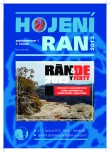Authors:
G. Krasowski
Authors place of work:
Chirurgická ambulance, Opole, Polsko
Published in the journal:
Hojení ran 7, č. Supplementum 1: 13, 2013
Category:
Abstrakta
Aim
The purpose of this study was to compare expenses incurred by National Health Fund (NHF) and costs of single venous ulcer healing before and after introduction of new system of leg ulcer treatment.
Methods
Since 2007, authors of this study in cooperation with EWMA, have introduced new model of leg ulcer treatment in counties of Opole, Strzelce Opolskie and since 2010 in county of Krapkowice. Results presented below come from Opole county: 2008 – before introduction of new model of chronic ulcer treatment and 2010 – after introduction. The essential aspect of new model introduced was organizational change of basic treatment place from hospital to place of habitual residence and introduction of modern system of causal and local treatment in compliance to EWMA guidelines. Implementation of these aims required appropriate training of medical staff, especially nurses, and creation of specialized chronic leg ulcer centre named Health Centre of Krapkowice. The cost of the treatment was counted basing on the ulcer duration, number of used dressings and average cost of one dressing change. The weekly cost incurred by NHF was counted basing on the number of visits in NHF centre and costs of the single visit. The costs of leg ulcer treatment were compared to the amount of money reimbursed by NHF for this purpose.
Results
Introduction of new model of chronic ulcer treatment correlated with the decrease of ratio of registered ulcerations from 1.6/1 000 dwellers to 1.0/1 000. Decrease of visits in NHF centers from 1.7/week to 1.3/week was also observed. Concurrently, the ratio of patients treated in home setting increased from 15.7 % to 68.8 %. The average time of ulcer treatment decreased from 10 to 5 months. Also, the number of dressing changes/week dropped from 7.5 to 2.7. The cost of one dressing change increased from 5 euro to 10 euro. Together, cost of single ulcer healing was 1 500 euro before new system introduction, whereas after, it was 540 euro. Combined cost incurred by NHF before was 2 042 euro/week, and after implementation of new system, the cost dropped to 1 784 euro. Other advantages achieved were improvement of diagnostics and decrease of pain level. Decrease of number of leg amputations because of non-healing ulceration dropped from 7.3 % to 2.7 %. NHF reimbursement was recognized as sufficient for hospital treatment and home care of chronic leg ulcers, contrary to the ambulatory care.
Conclusions
Change of model and the mode of treatment of chronic leg ulcer decreases expenses incurred and does not generate debts that need to be paid off by hospital units.
Štítky
Chirurgie všeobecná Sestra Domácí péčeČlánek vyšel v časopise
Hojení ran

2013 Číslo Supplementum 1
- PŘÍBĚH: Bylo mi 27
- Perorální antivirotika jako vysoce efektivní nástroj prevence hospitalizací kvůli COVID-19 − otázky a odpovědi pro praxi
- HydroCleanem efektivně hojíme onkologické rány po radioterapii
- Jak velkou porci jíst a zhubnout? Pomůckou může být talíř i ruka
- Abecední průvodce moderními krycími materiály aneb jaké krytí a kdy použít?
Nejčtenější v tomto čísle
- K 35: Možnosti léčby vlhké gangrény prstů nohy při syndromu diabetické nohy
- K 16: Možnosti lokálního ošetření fasciotomie
- K 30: ReCell Spray–On Skin

